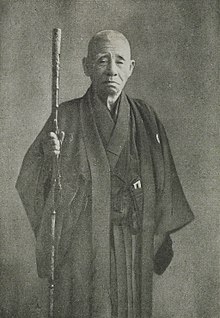
History Unveiled: The Birth of Cultured Pearls and the Vision of Mikimoto
Share
History Unveiled: The Birth of Cultured Pearls and the Vision of Mikimoto
by Dani Chavez
In the early 1900s, the world of pearls underwent a remarkable transformation thanks to the pioneering efforts of a visionary named Kokichi Mikimoto. Let's delve into the fascinating history of cultured pearls and the man who forever changed the industry.

Kokichi Mikimoto, 1953.
Image: National Diet Library, Public Domain, https://commons.wikimedia.org/w/index.php?curid=33075132
At the turn of the 20th century, pearls were highly coveted but scarce. Natural pearls, formed randomly and rarely found, commanded exorbitant prices. Against this backdrop, Kokichi Mikimoto, a Japanese entrepreneur with an unyielding passion for pearls, set out to revolutionize the pearl market.
Mikimoto dedicated years of tireless research and experimentation to unravel the secrets of pearl cultivation. He hypothesized that if an irritant could be deliberately introduced into an oyster, it might produce a pearl with similar qualities to those found in nature. Mikimoto's relentless pursuit paid off in 1893 when he successfully cultured the world's first-ever semi-spherical pearl.

A Cultured Pearl in Oyster. Image by: Merrillie Redden/Shutterstock.com
The breakthrough did not come easy, though. Mikimoto faced numerous obstacles, including high oyster mortality rates and the challenges of finding the perfect irritant to stimulate pearl formation. But he persevered, continually refining his techniques and improving the survival rates of his oyster populations.
Mikimoto's meticulous attention to detail and unwavering dedication led him to establish his pearl farm on Ojima Island in Japan. Here, he carefully selected and nurtured oysters in sheltered waters, providing optimal conditions for pearl development.

Mikimoto building in Taisho and Pre-war Showa eras.
By Unknown author - Japanese book "Forgone days of the Imperial Capital, Tokyo: Towns and Dwellings, Taisho and Showa eras" published by Kashiwashobo., Public Domain, https://commons.wikimedia.org/w/index.php?curid=5682771
In 1905, Mikimoto opened his first pearl boutique in Tokyo, showcasing his exquisite cultured pearls to the world. People marveled at their exceptional beauty, as they possessed a remarkable luster, smooth surface, and consistent quality, rivaling even the most treasured natural pearls.
Vintage Cultured Pearl Rings. Image by: The Gemmary
The introduction of cultured pearls created a paradigm shift in the pearl industry. Suddenly, pearls became more accessible, and a broader audience could enjoy the awe-inspiring beauty of these gems. Mikimoto's name became synonymous with cultured pearls, and his pioneering work forever transformed the pearl market.
Mikimoto's dedication to excellence extended beyond his pearl farming techniques. He also played a pivotal role in establishing quality standards for pearls. Mikimoto devised a grading system that considered factors such as size, shape, color, and luster, ensuring that each pearl met the highest standards of beauty and quality.

Image by: The Gemmary
Today, Mikimoto's legacy lives on as his company continues to produce exquisite cultured pearls, perpetuating the tradition of fine craftsmanship and innovation. Cultured pearls have become a symbol of elegance and grace, adorning the necks, ears, and wrists of individuals who appreciate the timeless beauty of these natural treasures.
The captivating history of cultured pearls intertwines with the indomitable spirit and visionary mindset of Kokichi Mikimoto. Through his determination and groundbreaking achievements, he unlocked the secrets of pearl cultivation and made pearls accessible to a broader audience. The enchanting allure of cultured pearls continues to inspire and fascinate gemstone enthusiasts worldwide, and it is all thanks to the audacious dreams of one man.

Japanese Akoya Cultured Pearl Jewelry. Image by: The Gemmary
The popularity of cultured pearls soared in the 1950s, thanks to American GIs who brought them back from Japan after World War II. These pearls became coveted gifts and sparked a fascination with their elegance and beauty. Hollywood icons like Grace Kelly and Audrey Hepburn further popularized pearls, making them a must-have accessory. The 1950s became known as the "Pearl Decade," with pearls adorning women from all walks of life. Today, pearls continue to captivate with their timeless charm. Explore our online store and embrace the elegance of cultured pearls that have enchanted generations.

